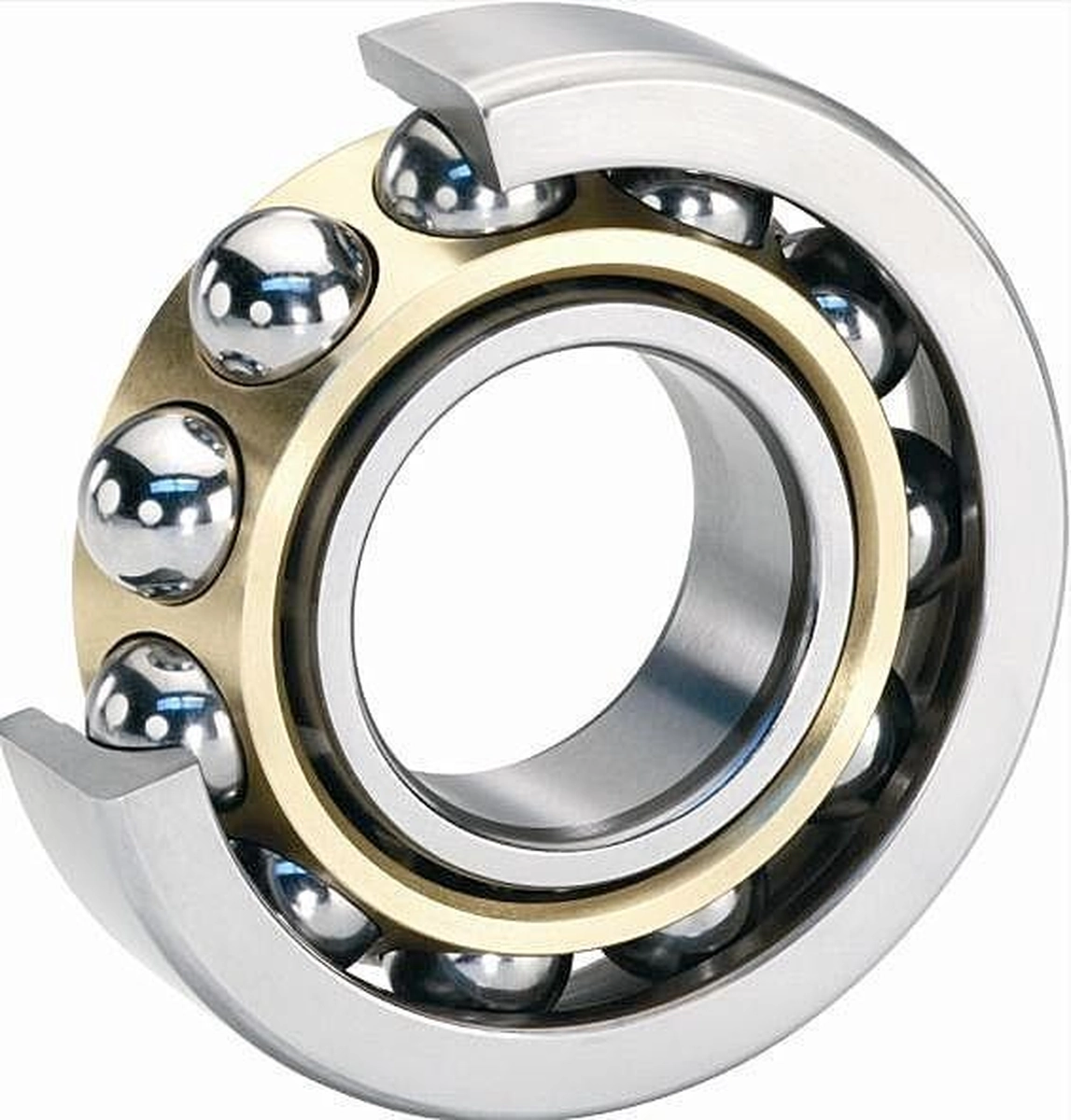Ball Bearing in Spindle
2024-07-10 16:38:48
In the realm of mechanical engineering and machine tool design, the integration of appropriate bearings in spindles plays a pivotal role in enhancing the machine's performance, precision, and durability. Among the various types of bearings used, ball bearings, particularly angular-contact ball bearings, are crucial for spindle applications due to their ability to handle both radial and axial loads efficiently. This article delves into the role of ball bearings in spindles, exploring their design, functionality, and the advantages they offer in high-speed machining environments.
Understanding Ball Bearings in Spindles

Definition and Design
Ball bearings are a type of rolling-element bearing that utilize balls to maintain the separation between the bearing races. The purpose of a ball bearing in a spindle is to reduce rotational friction and support radial and axial loads. Angular-contact ball bearings, commonly used in spindle applications, are designed such that the line of contact between the balls and the races is angled relative to the bearing axis. This design allows them to handle significant amounts of radial and axial loads in one direction.
The Crucial Role of Ball Bearings
Ball bearings in spindles serve the paramount purpose of facilitating smooth and accurate rotational movement. They are instrumental in achieving the desired machining speed and precision, which, in turn, affects the final product's quality. Bearing designs vary to support spindles across lateral and radial movements while enduring the load, speed, and temperature extremes inherent in machine tool operations.
Components of Angular-Contact Ball Bearings
Angular-contact ball bearings typically consist of:
- Inner and Outer Races: These are the rings with grooved pathways where the balls sit. The shape and design of these races are critical as they determine the load distribution across the bearing.
- Balls: Acting as the rolling elements, the balls transfer the load between the races while minimizing friction.
- Cage: This component holds the balls in place at equal intervals around the bearing. It ensures that the balls remain evenly spaced during operation, preventing collisions and distributing the load evenly.
Configuration
In spindle applications, angular-contact ball bearings are often arranged in specific configurations to optimize performance:
- Single Row: For moderate radial and axial loads with high-speed capability.
- Double Row: Offers higher load capacity and rigidity than single-row configurations.
- Duplex Arrangement: Two or more bearings are used together in configurations such as face-to-face or back-to-back to handle higher loads and provide better stiffness and stability.
Significance of Ball Bearings in Spindles
The choice of bearing significantly impacts a spindle's performance, affecting its speed, precision, and reliability.
High-Speed Operation
Spindles in machine tools are required to operate at high speeds while maintaining precision. Ball bearings are particularly suited for high-speed applications due to their ability to minimize friction and heat buildup, which are critical factors in high-speed rotations.
Precision
Angular-contact ball bearings provide excellent precision due to their ability to maintain tight tolerances between the races and balls. This precision is crucial in applications like CNC machines and precision grinders, where even minute inaccuracies can significantly affect the quality of the output.
Load Handling
The specific design of angular-contact ball bearings allows them to handle both radial and axial loads effectively. This dual-load capacity is essential for spindles that experience different types of loads during operations such as milling, drilling, or grinding.
Durability and Reliability
The robust design of ball bearings, combined with proper maintenance and lubrication, contributes to their durability and reliability. Long-lasting bearings reduce the need for frequent replacements, thereby minimizing downtime and maintenance costs.
Applications
Ball bearings in spindles are used across various sectors:
- Automotive: In equipment used for manufacturing automotive parts.
- Aerospace: In the precise machining of aerospace components.
- Metalworking: In lathes, milling machines, and drilling presses.
- Electronics: In machines used for the fabrication of electronic components.
Conclusion
Ball bearings are indispensable components in the spindles of modern machine tools. Their ability to handle high speeds, combined with excellent load-bearing capacity and precision, makes them essential for the efficient and accurate performance of machinery. As technology advances, the development of ball bearings continues to evolve, focusing on enhancing their capacity, reducing maintenance requirements, and improving overall machine performance.
See What Lunyee Can Do For You
Contact Us
- 8619149417743
- +86-0371-5562 0274
- [email protected]
- Zhengzhou, Henan Province, China
- Mon-Fri: 9:00 - 18:00




